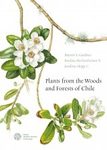About this book
Language: Spanish
The Catálogo de las Plantas Vasculares de Bolivia is more than a list of the species of plants recorded for the country; it also includes citations, synonyms, information about political distribution, types of vegetation, altitudinal distribution, and habits. This type of information makes the catalog useful not only to taxonomists, but also to ecologists, conservationists, and managers of natural resources.
The catalogue includes 47,974 names, of which 15,345 species are accepted, including 2,343 endemic species, 12,165 native species, 694 cultivated species, 267 adventitious species, and 221 naturalized species. The number of accepted Pteridophytes is 1,145 or 7.5% of the total number of species, the gymnosperms are 43 (0.3%), and the Angiosperms are 14,157 (92.3%). The highest number of species occurs in the families Orchidaceae (1,263), Asteraceae (1,256), Fabaceae (1,114), Poaceae (962), Malvaceae (445), Rubiaceae (429), Cyperaceae (348), Solanaceae (341), Melastomataceae (325), Euphorbiaceae (322), Bromeliaceae (321), Apocynaceae (285), Cactaceae (229), and Piperaceae (216). The size of the flora of Bolivia is comparable to the number of species found in the Ecuador, Peru, and Cono Sur.
The Catalogue of the Vascular Plants in Bolivia is the result of a collaboration between the National Herbarium of Bolivia (LPB) of the Universidad Mayor de San Andrés, the Herbario Nacional Forestal (BOLV) of the University of Cochabamba, the Herbario del Oriente (USZ) of the Museo de Historia Natural Noel Kempff Mercado, The New York Botanical Garden (NY),and Missouri Botanical Garden (MO).
Summary in Spanish:
El Catálogo de las Plantas Vasculares de Bolivia constituye más que una lista de las especies de plantas registradas para el país; también incluye citas bibliográficas, sinónimos, información acerca de la distribución política, tipos de vegetación, distribución altitudinal y formas de vida. Este tipo de información permite que el Catálogo sea útil no solamente para taxónomos, sino también para ecólogos, conservacionistas y administradores de los recursos naturales.
El Catálogo incluye 47 974 nombres de las cuales 15 345 son especies aceptadas, incluyendo 2 343 endémicas, 12 165 especies son nativas, 694 cultivadas, 267 adventicias y 221 naturalizadas. El número de pteridófitas aceptadas es de 1 145 o 7,5% del total de especies, el de las gimnospermas es 43 (0,3%) y el de las angiospermas es 14 157 (92,3%). El número más alto de especies se presenta en las familias Orchidaceae (1 263), Asteraceae (1 256), Fabaceae (1 114), Poaceae (962), Malvaceae (445), Rubiaceae (429), Cyperaceae (348), Solanaceae (341), Melastomataceae (325), Euphorbiaceae (322), Bromeliaceae (321), Apocynaceae (285), Cactaceae (229) y Piperaceae (216). El tamaño de la flora de Bolivia es comparable al número de especies encontrado en el Ecuador, Perú y Cono Sur.
El Catálogo de las Plantas Vasculares de Bolivia es el resultado de un esfuerzo conjunto entre el Herbario Nacional de Bolivia (LPB) de la Universidad Mayor de San Andrés, el Herbario Nacional Forestal (BOLV) de la Universidad de Cochabamba, el Herbario del Oriente (USZ) del Museo de Historia Natural Noel Kempff Mercado, The New York Botanical Garden (NY) y Missouri Botanical Garden (MO).
Customer Reviews






![Catálogo de las Plantas Vasculares de Bolivia [Catalogue of the Vascular Plants of Bolivia] (2-Volume Set) Catálogo de las Plantas Vasculares de Bolivia [Catalogue of the Vascular Plants of Bolivia] (2-Volume Set)](http://mediacdn.nhbs.com/jackets/jackets_resizer_xlarge/22/221862.jpg?height=620)
![Catálogo de las Plantas Vasculares de Bolivia [Catalogue of the Vascular Plants of Bolivia] (2-Volume Set)](http://mediacdn.nhbs.com/jackets/jackets_resizer/22/221862.jpg)
![Catálogo de las Plantas Vasculares de Bolivia [Catalogue of the Vascular Plants of Bolivia] (2-Volume Set)](http://mediacdn.nhbs.com/jackets/jackets_resizer/22/221862_1.jpg)
![Catálogo de las Plantas Vasculares de Bolivia [Catalogue of the Vascular Plants of Bolivia] (2-Volume Set)](http://mediacdn.nhbs.com/jackets/jackets_resizer/22/221862_2.jpg)







![Catálogo de la Flora Relictual del Valle Geográfico del Río Cauca [Catalog of the Relictual Flora of the Geographical Valley of the Cauca River]](http://mediacdn.nhbs.com/jackets/jackets_resizer_medium/24/245138.jpg?height=150&width=100)

![Catálogo de la Familia Poaceae en la República Argentaina [Catalogue of the Poaceae Family in the Argentine Republic]](http://mediacdn.nhbs.com/jackets/jackets_resizer_medium/37/37816.jpg?height=150&width=105)







![Gramineas de Bolivia [Gramineas of Bolivia]](http://mediacdn.nhbs.com/jackets/jackets_resizer_medium/81/81508.jpg?height=150&width=94)













![Flora Mesoamericana, Volume 7 (Part 2): Orchidaceae [Spanish]](http://mediacdn.nhbs.com/jackets/jackets_resizer_medium/36/36837.jpg?height=150&width=113)







